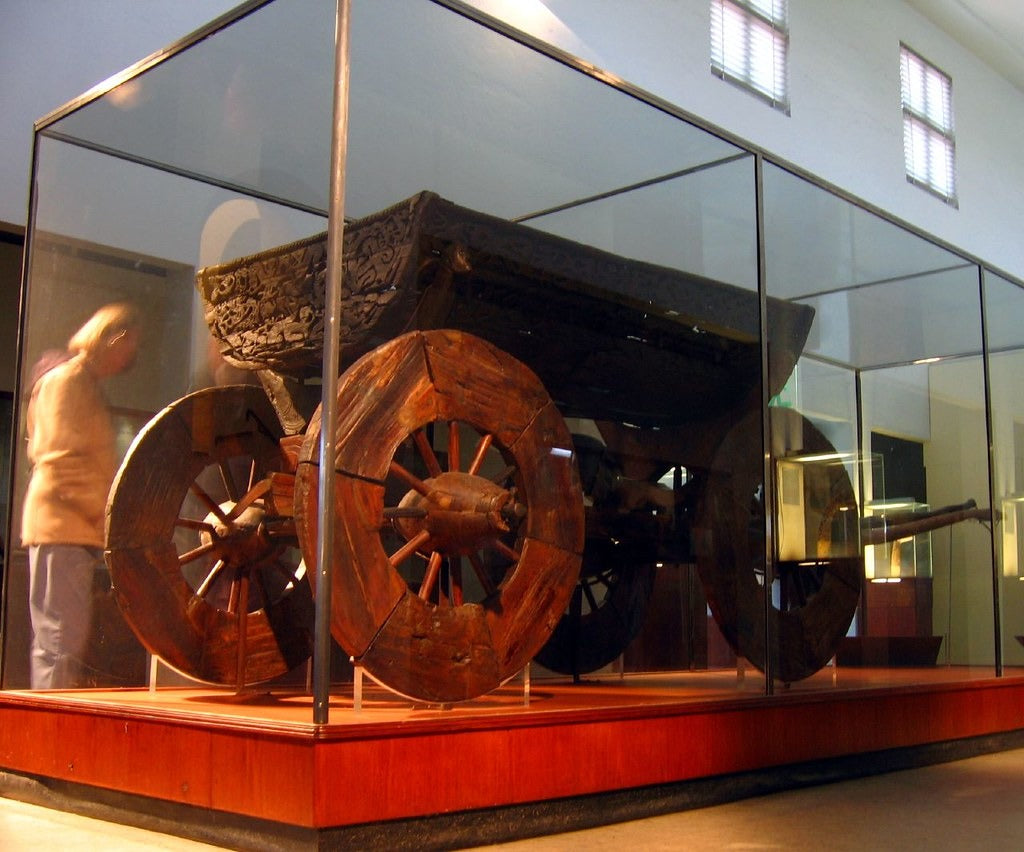
Recreating a Viking Age Anchor: A Historic Feat at the Viking Ship Museum
At the Viking Ship Museum in Roskilde, Denmark, a remarkable endeavor is underway: the recreation of a Viking Age anchor. This project, a collaboration with blacksmithing students from England, offers a unique opportunity to witness ancient craftsmanship come to life. The iron anchor, originally found in the Ladby ship-grave on Funen, stands as a testament to the maritime prowess and technical skill of the Vikings.
The Historical Significance of the Ladby Anchor
The Ladby anchor is an extraordinary archaeological find. Discovered in the ship-grave at Ladby, it represents a crucial piece of Viking Age maritime technology. The anchor, characterized by its stock design, was forged from Norwegian iron and coupled with a chain likely made from Swedish material and welded using Danish iron. This blend of materials underscores the interconnected trade and craftsmanship networks of the Viking Age.
Specifications of the Ladby Anchor
- Length: 1.26 meters
- Width: 0.83 meters
- Chain Length: Approximately 11 meters
The stock anchor's design, with its wooden stock at right angles to the iron flukes, ensures it grips the seabed effectively, a significant advancement over earlier stone anchors.
The Re-Creation Project
From May 24th to 29th, 2024, the Viking Ship Museum will host blacksmiths from the National School of Blacksmithing in England. These students will recreate the Ladby anchor as part of their education in experimental archaeology and traditional blacksmithing techniques.
The Collaborative Process
This project exemplifies interdisciplinary collaboration, combining the expertise of archaeologists, blacksmiths, and historians. The goal is not only to recreate the anchor but to do so using historically accurate methods and materials.
The Skuldelev Ships and Their Legacy
The Skuldelev ships, excavated from Roskilde Fjord in 1962, are among the most significant Viking ship finds. These ships were deliberately sunk to block a navigable channel, a defensive measure illustrating Viking strategic ingenuity.

The Skuldelev 3 ship
Skuldelev 5: The Warship
Skuldelev 5, one of the five ships, is currently being reconstructed at the museum. Although roughly 50% of its hull survived, the ship was stripped of all removable components, including anchors, before it was scuttled.
Integrating the Ladby Anchor Design
The absence of anchors in the Skuldelev finds led the blacksmithing team to model the new anchor for Skuldelev 5 on the Ladby anchor. This choice ensures historical accuracy and practical functionality in the reconstruction.
The Craftsmanship of Viking Anchors
Viking Age anchors were sophisticated tools forged from iron bars. These bars were welded together to form a T-shaped blank, which was then shaped into the final anchor design.
Evolution from Stone to Iron
Early anchors were simple stones used for their weight. By around 600 BC, stock anchors appeared in the Mediterranean and spread to Northern Europe by the 1st century AD. Viking anchors, with their elongated shanks and small flukes, represented a significant evolution in maritime technology.
Technical Aspects of Forging
The blacksmithing process involves heating iron to red-hot temperatures, shaping it with hammers, and using bellows to maintain the necessary heat levels. This method, demonstrated by the visiting students, mirrors the techniques used by Viking blacksmiths.

Photo: Vikingemuseet Ladby
Visiting the Viking Ship Museum
Visitors to the Viking Ship Museum from May 24th to 29th can observe the blacksmiths at work in front of the Viking Ship Hall. This event offers a rare glimpse into the ancient art of anchor forging, providing an educational and immersive experience.
Event Details
- Dates: May 24th - 29th, 2024
- Location: Large tent in front of the Viking Ship Hall
Conclusion
The recreation of the Ladby anchor at the Viking Ship Museum is a profound tribute to Viking Age craftsmanship and ingenuity. By engaging in this project, the museum not only preserves ancient techniques but also fosters a deeper understanding of our shared cultural heritage.
References
Viking Ship Museum. (2024, June 20). Impressive Viking Age anchor will be recreated at the Viking Ship Museum. Retrieved from https://www.vikingeskibsmuseet.dk/en/news/impressive-viking-age-anchor-will-be-recreated-at-the-viking-ship-museum
"Skuldelev 3 in Vikingeskibsmuseet, Roskilde" by Hans Olav Lien is licensed under CC BY-SA 3.0.








